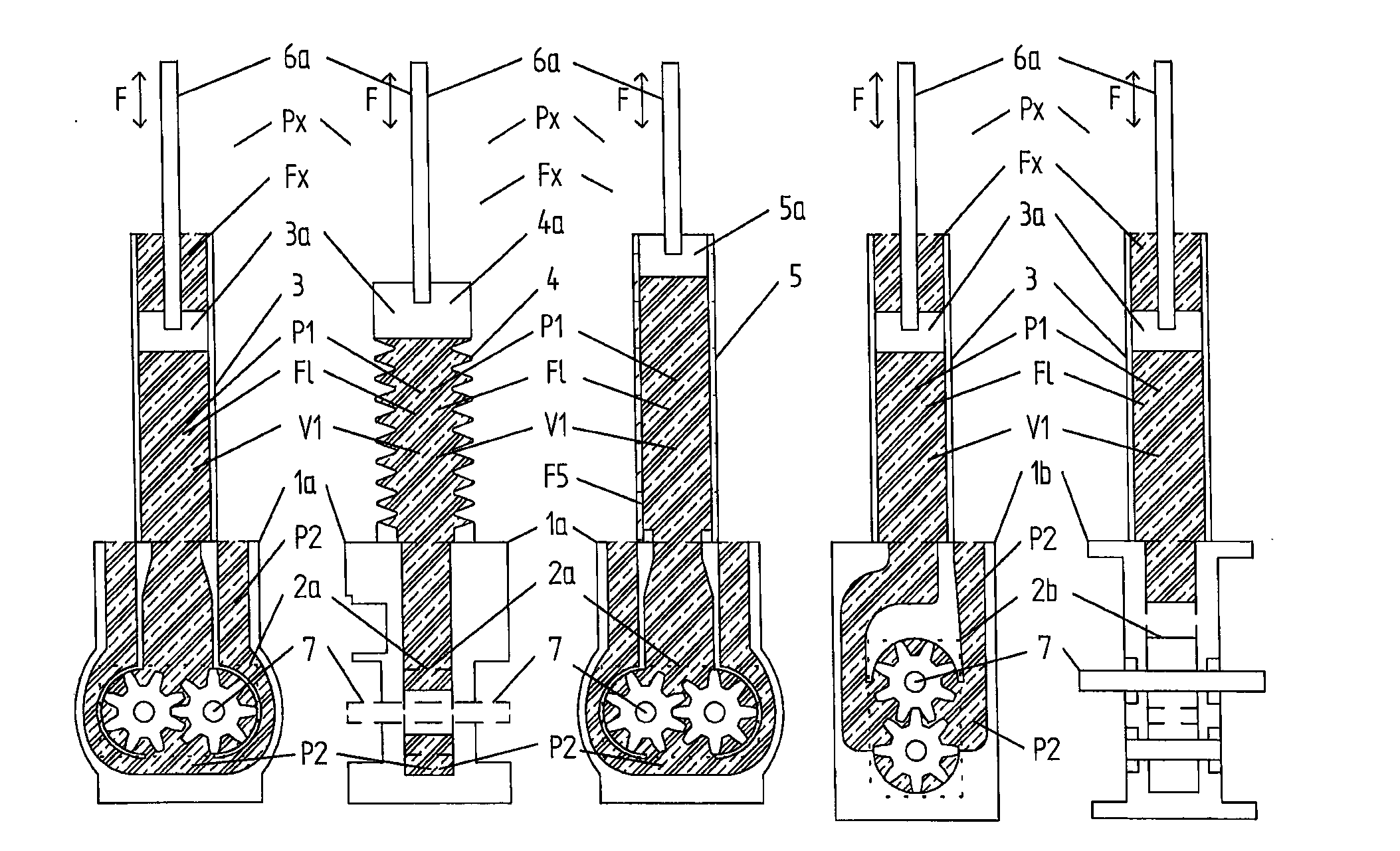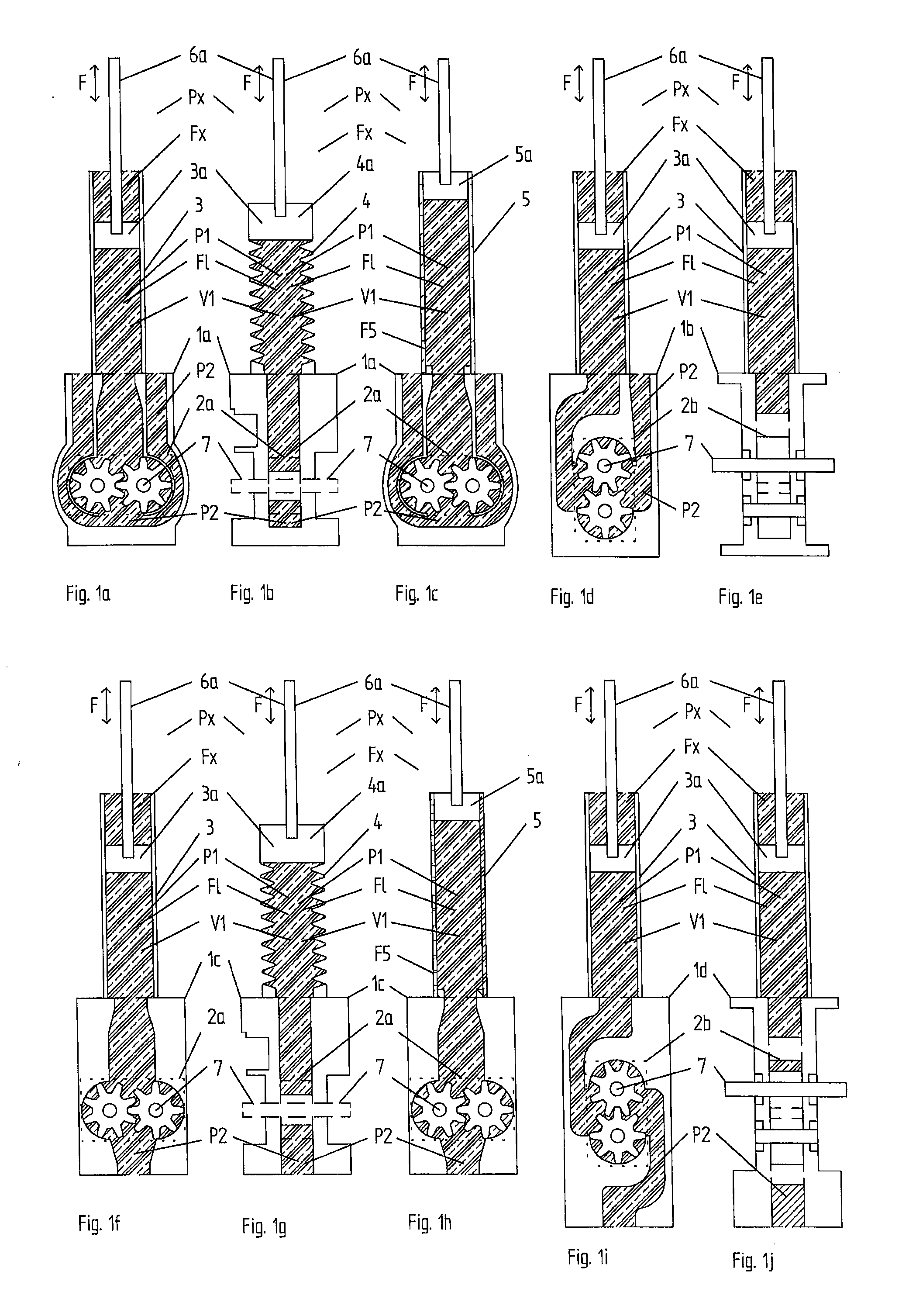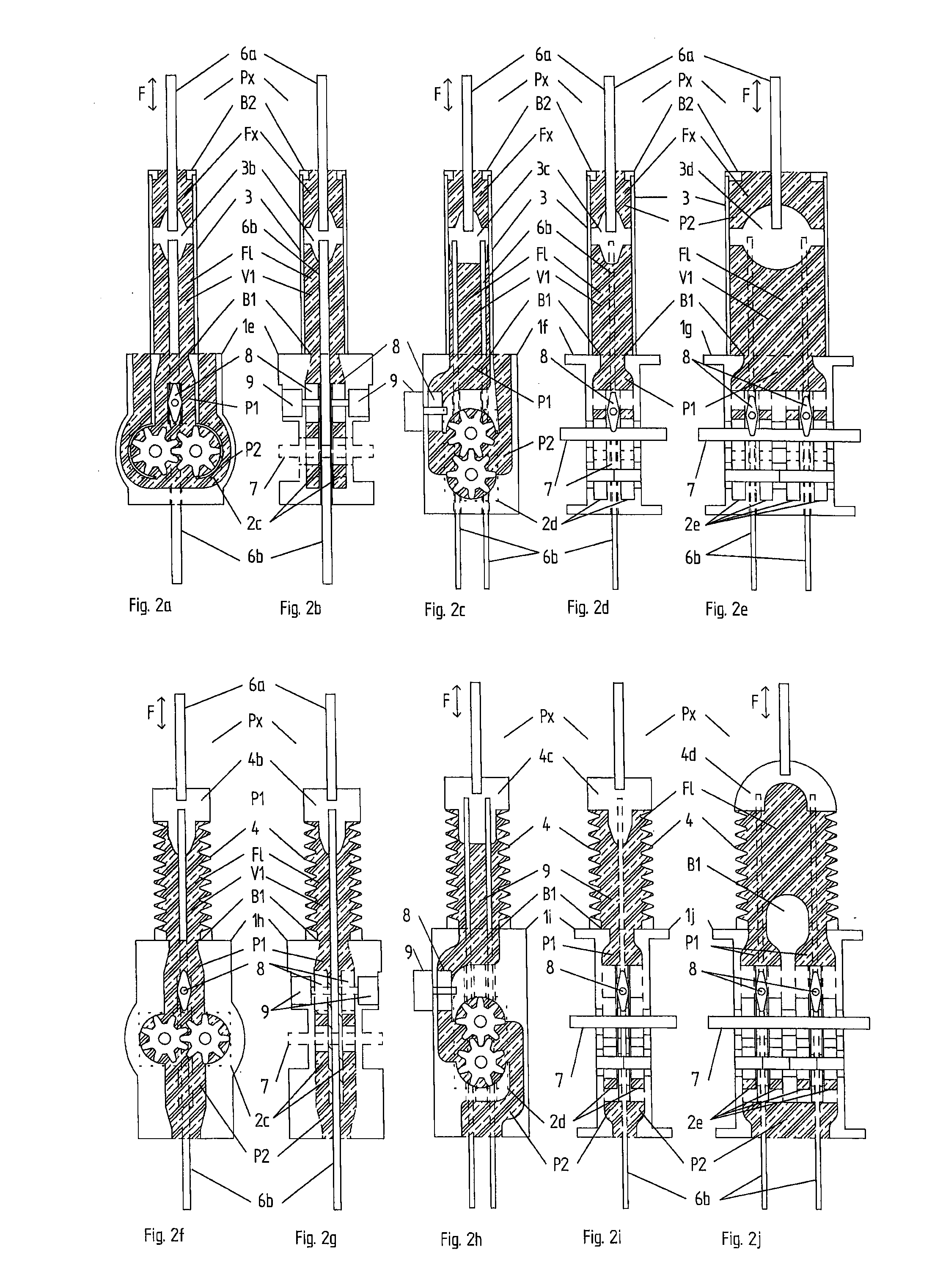Energy Transforming Unit and Energy Transforming System Comprising Such a Unit
a technology of energy transformation and energy transforming unit, which is applied in the direction of dynamo-electric machines, rotary piston engines, engine lubrication, etc., can solve the problems of large and often land-based owc-constructions with very low efficiency, difficult for air turbines to handle large variations in pressure and flow, and avoid internal fluid leakage and/or external fluid suction. , the effect of effective translation
- Summary
- Abstract
- Description
- Claims
- Application Information
AI Technical Summary
Benefits of technology
Problems solved by technology
Method used
Image
Examples
Embodiment Construction
[0096]In the following a detailed description of embodiments of the present invention will be given. It will be appreciated that these figures are for illustration only and are not in any way restricting the scope of the invention. Thus, any references to direction, such as “up” or “down”, are only referring to the directions shown in the figures. Also, any dimensions etc. shown in the figures are for illustration purposes.
[0097]It must be noted that, as used in this specification and the appended claims, the singular forms “a,”“an,” and “the” include plural referents unless the context clearly dictates otherwise.
[0098]Elasticity is to be understood as a materials ability to deform in an elastic way. Elastic deformation is when a material deforms under stress (e.g. external forces), but returns to its original shape when the stress is removed. A more elastic material is to be understood as a material having a lower modulus of elasticity or Young's modulus. The elastic modulus of an ...
PUM
 Login to View More
Login to View More Abstract
Description
Claims
Application Information
 Login to View More
Login to View More - R&D
- Intellectual Property
- Life Sciences
- Materials
- Tech Scout
- Unparalleled Data Quality
- Higher Quality Content
- 60% Fewer Hallucinations
Browse by: Latest US Patents, China's latest patents, Technical Efficacy Thesaurus, Application Domain, Technology Topic, Popular Technical Reports.
© 2025 PatSnap. All rights reserved.Legal|Privacy policy|Modern Slavery Act Transparency Statement|Sitemap|About US| Contact US: help@patsnap.com



